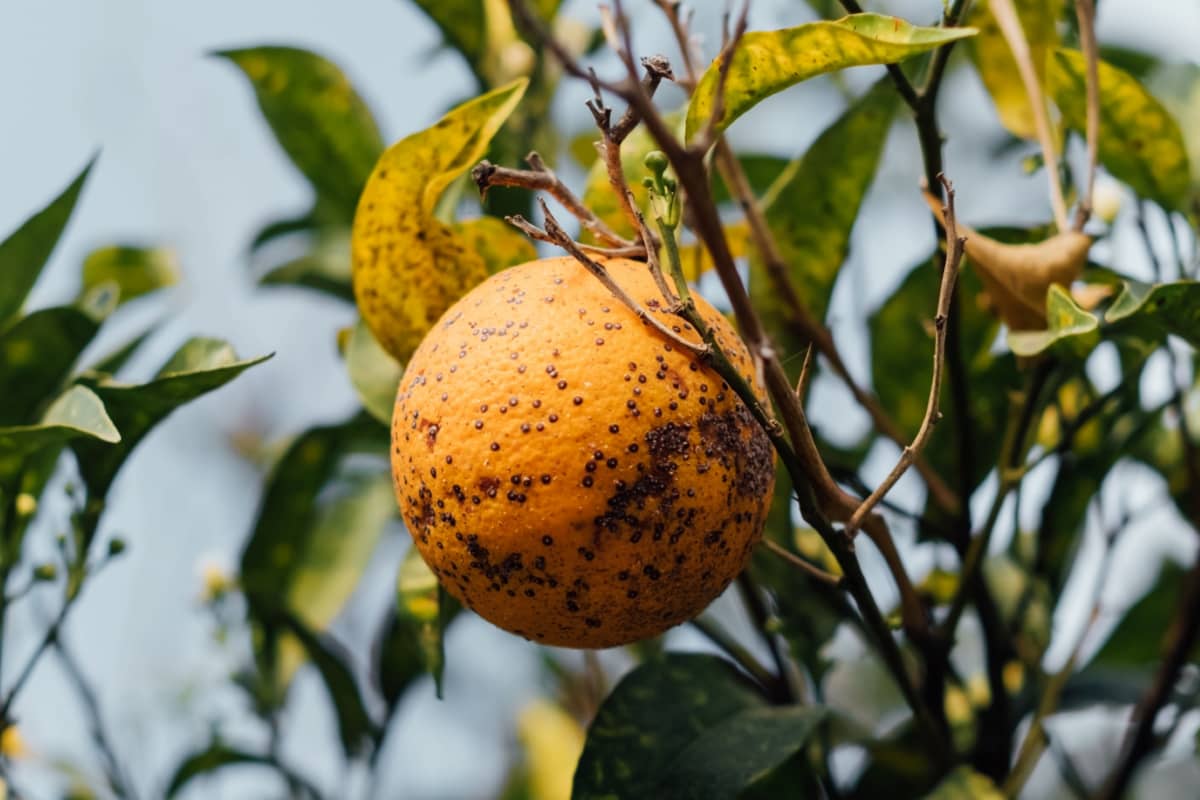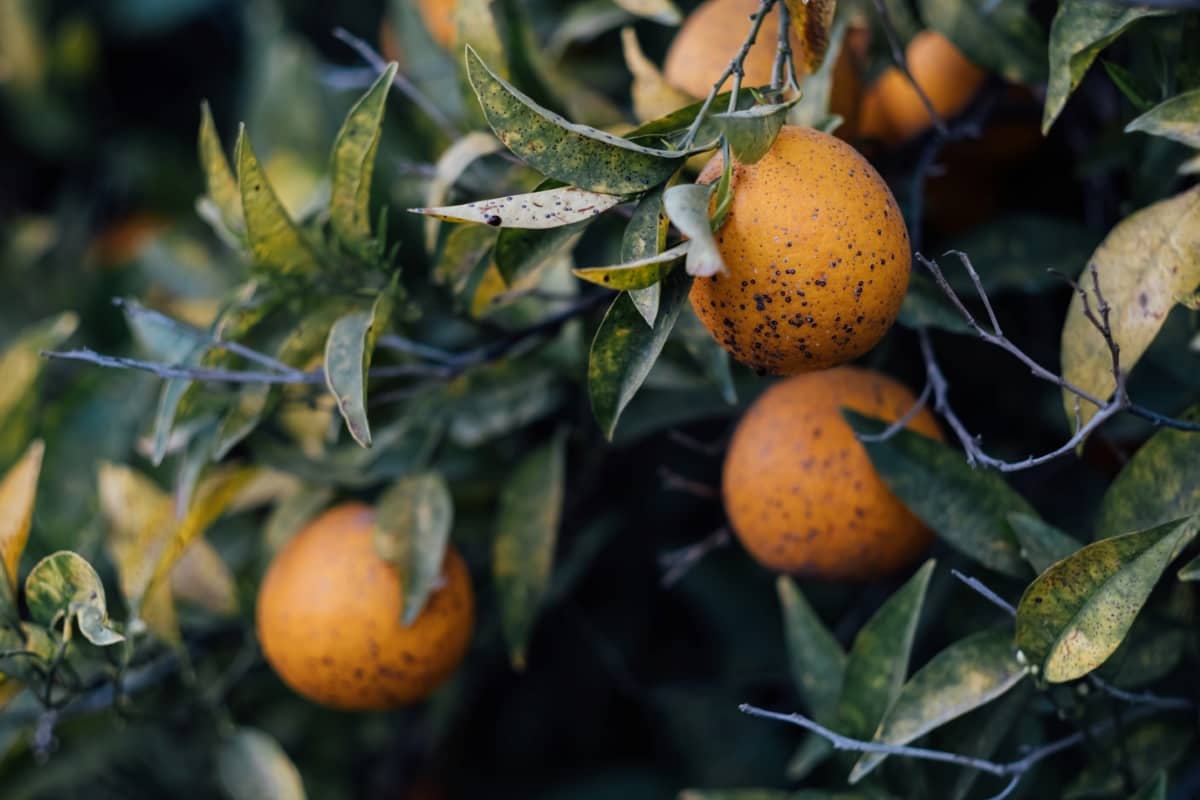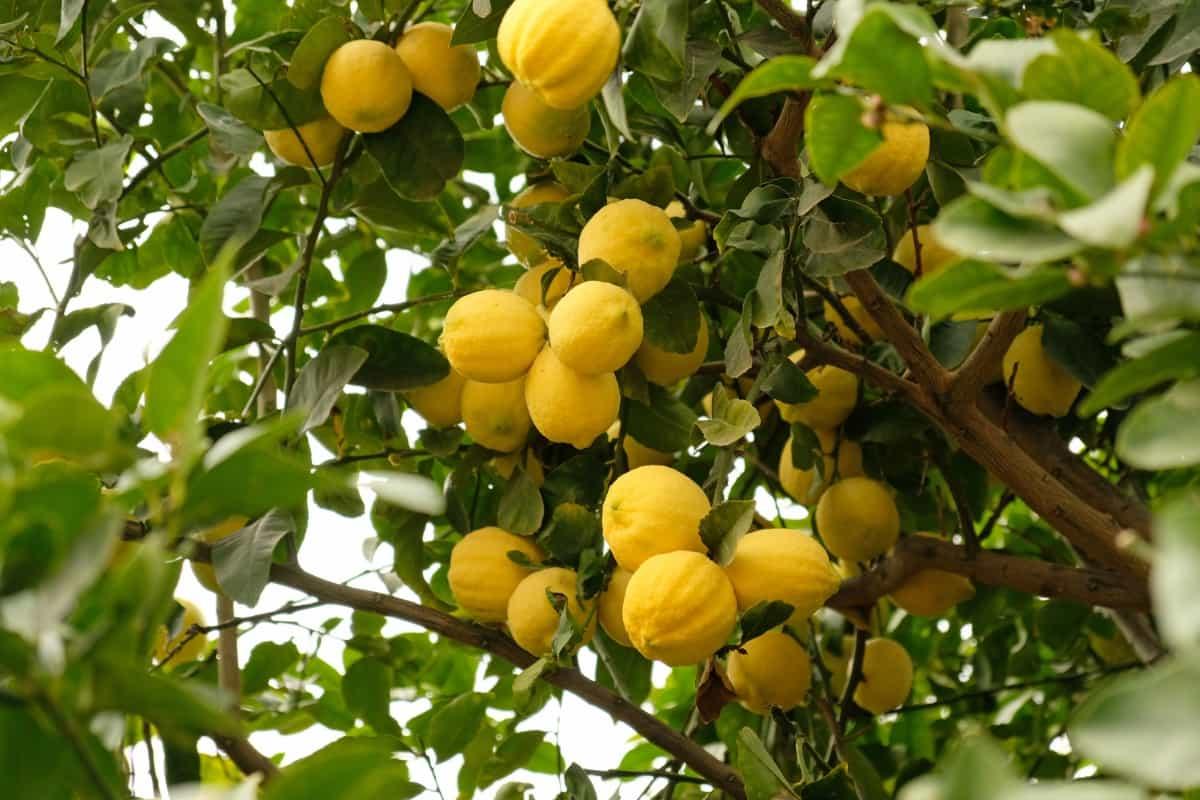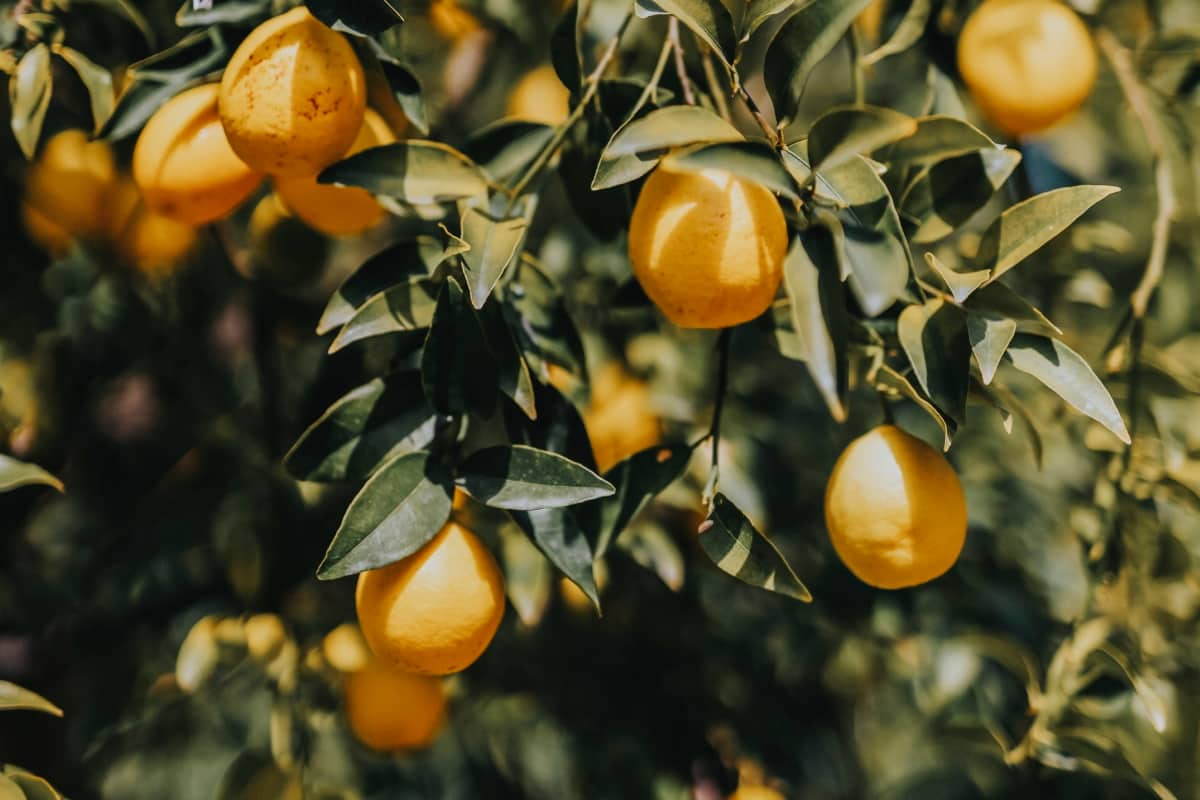Citrus canker is a serious disease that affects citrus trees worldwide. A bacterial pathogen, Xanthomonas citri subsp, causes it. citri infects citrus plants’ leaves, stems, and fruits. Citrus canker can reduce the yield and quality of citrus fruits and make them unmarketable. This blog will discuss controlling citrus canker disease in citrus trees, including the symptoms, chemical and biological control methods, integrated pest management, cultural practices, and regulatory measures.

How to Control Citrus Canker Disease in Citrus Trees
Understanding Citrus Canker Disease
Wind, rain, insects, birds, humans, and contaminated tools and equipment are all sources of citrus canker disease spread. The bacteria get inside the plant through wounds or natural openings on the surface of the leaves, stems, and fruits. Yellow haloes surround the raised, corky lesions that the infection causes. The lesions may coalesce and form large necrotic areas that affect the photosynthesis and transpiration of the plant. The infected fruits may drop prematurely or develop unsightly blemishes that reduce their market value.
Symptoms of Citrus Canker Disease
The disease appears as characteristic lesions that serve as the orchard’s first warning indication of trouble. These lesions alert the eye to the potential danger by looking at corky, elevated patches on foliage and fruits. Because Xanthomonas axonopodis, the bacterial cause of these lesions, is present, early detection is essential.
Premature fruit drop is one of the citrus canker’s most alarming side effects. The lesions jeopardize the fruit’s structural integrity, hastening its separation from the tree. For orchard owners, this early shedding reduces yields and has a major negative financial impact. It becomes a race against time to act quickly when these symptoms are detected so that containment measures can be implemented immediately.
Implementing Chemical Control Measures for Citrus Canker
Chemical control is one of the methods to manage citrus canker disease. However, it is ineffective in eradicating the disease and may pose environmental and health risks. Therefore, chemical control should be used as a part of an integrated pest management program only when the disease pressure is high.
In case you missed it: Mango Bacterial Canker Disease Management: Symptoms, Treatment, Chemical, Biological, and Organic Control

Some chemicals that control citrus canker are copper-based compounds, such as copper hydroxide, copper sulfate, and copper oxychloride. These chemicals act as bactericides that kill or inhibit the growth of the bacteria. They should be applied before or during rainy periods when the infection risk is high. However, they may also cause phytotoxicity or damage to the plant tissues if applied excessively or improperly.
Biological Control Strategies for Citrus Canker
Biological control is another method to manage citrus canker disease. It involves using natural enemies or antagonists of the bacteria to reduce their population or activity. Some biological agents tested for citrus canker control are bacteriophages, predatory bacteria, beneficial fungi, and plant extracts.
These chemicals can either kill or stop the bacteria directly or work as biostimulants to make the plant more resistant to or tolerant of the disease. However, biological control is not widely used for citrus cankers because of its limited availability, efficacy, and consistency.
Integrated Pest Management (IPM) for Citrus Canker
Integrated pest management (IPM) is a holistic approach to managing pests and diseases in an environmentally friendly and economically feasible way. It combines different control methods, such as cultural, physical, chemical, and biological, to achieve optimal results. IPM for citrus canker requires a thorough understanding of the disease cycle, epidemiology, and management options.
Regularly inspecting citrus plants for signs of citrus canker is crucial. Sanitation involves removing and destroying infected plant materials to prevent further spread. Pruning out infected branches and shoots improves air circulation. Disinfection with bleach or alcohol solutions prevents cross-contamination. Exclusion prevents the introduction of new infection sources by using certified disease-free materials. Planting resistant or tolerant citrus varieties can also help. It is essential to avoid the movement of infected plants or fruits across regions.
Cultural Practices for Citrus Canker Management
- Site selection: Choosing a suitable location for planting citrus trees with good drainage, soil fertility, sunlight exposure, and air circulation.
- Spacing: Planting citrus trees at appropriate distances allows enough room for growth and maintenance.
- Irrigation: Watering citrus trees adequately but not excessively to avoid water stress or waterlogging that may increase their vulnerability to infection.
- Fertilization: Applying balanced nutrients to citrus trees to maintain their health and vigor.
- Mulching: Covering the soil surface around citrus trees with organic mulch such as paddy straw or wood chips to conserve soil moisture, suppress weeds, and prevent soil splash that may carry bacteria.
In case you missed it: Fruit Canker Disease Management in Guava: Symptoms, Treatment, Cultural, Chemical, and Preventive Measures

Regulatory Measures and Quarantine Protocols for Citrus Canker
Regulatory measures and quarantine protocols are policies and procedures that aim to prevent or limit the spread of pests and diseases within or across regions or countries. Governmental or international organizations with the authority and responsibility to protect agricultural and natural resources implement them.
- Surveillance: Conducting surveys and inspections to detect and report the presence and distribution of citrus cankers in a given area or region.
- Eradication: means taking steps to get rid of citrus canker from where it has been found, like cutting down and destroying all infected plants and fruits, treating them with chemicals, and limiting the movement of plant materials.
- Implementation: Implementing measures to keep citrus canker from spreading in an area or region where it already exists, like using chemicals, setting up buffer zones, and limiting the movement of plant materials.
- Certification: Implementing measures to certify that citrus plants or fruits are free from citrus canker before they are moved or traded, such as testing, inspecting, labeling, and issuing certificates or permits.
- Quarantine: Implementing measures to isolate and restrict the movement of citrus plants or fruits suspected or confirmed to be infected with citrus canker, such as holding, testing, treating, or destroying them.
Frequently Asked Questions (FAQ) on Citrus Canker Disease
What are the Long-Term Effects of Citrus Canker on Orchard Productivity?
Citrus canker can lead to long-term consequences such as reduced yields and economic losses. The disease’s premature fruit drop has an impact on overall orchard productivity. Early detection and proactive management are crucial to minimizing these long-term effects.
Can Citrus Canker Impact Fruit Quality?
Yes, citrus canker can significantly impact fruit quality. The corky lesions on fruits compromise their appearance and market value. By implementing effective control measures, you preserve quantity and enhance the quality of your citrus produce.
Are There Resistant Citrus Varieties to Citrus Canker?
While no citrus variety is entirely resistant, some exhibit greater tolerance. Varieties like calamondin and certain mandarins show increased resistance. When planning or replanting, consider selecting varieties known for their resilience to citrus canker.
In case you missed it: Bacterial Canker Management in Tomato: Symptoms, Treatment, Chemical, Biological, Natural, and Organic Control

Conclusion
Citrus canker causes significant losses in yield and quality of citrus fruits and threatens the citrus industry. Therefore, it is important to control citrus canker disease in citrus trees using various methods, such as chemical and biological control, integrated pest management, cultural practices, and regulatory measures. By doing so, we can protect our citrus trees from this disease and enjoy their fruits for years.
- Deworming Schedule for Dogs/Puppies: A Beginners Guide
- How to Prevent and Control Parasites in Goats
- Beneficial Insects in Pest Management
- Natural Solutions for Pest Control in Flower Gardens
- Types of Fungicides Used in Agriculture
- Common Issues in the Fruit Development Stage of Pomegranate Farming
- Fruit Development Issues in Papaya: Easy Solutions and Treatment
- Soil-Borne Diseases and How to Protect Your Plants
- Practices to Prevent Disease Spread in the Garden